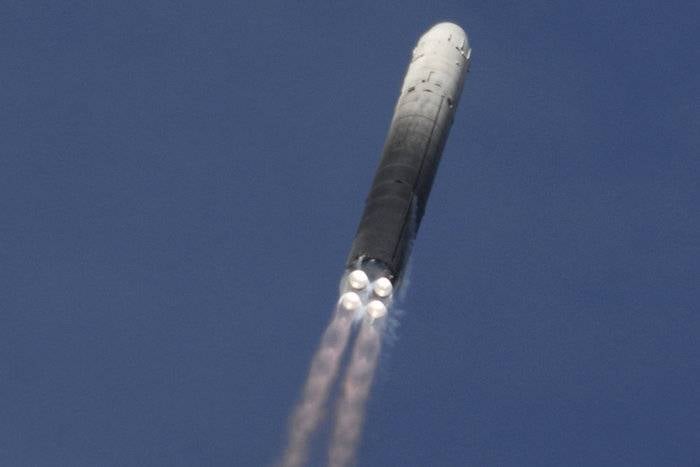American magazine compared the hypersonic weapon of the Russian Federation and the United States
As noted by The National Interest, such weapons in the future can have a serious impact on the strategic balance around the world. As an example of Russian hypersonic weapons, the Zircon anti-ship missile and aviation X-32 cruise missile. Already appeared information that during the tests, "Zircon" reached Mach 8, and its range is at least 400 kilometers. The missile can go into service in 2019-2020, and in the worst case, if the work drags on - in the mid-2020s.
But the X-32, designed specifically for the upgraded long-range bomber Tu-22М3М, is already in the final stages of testing. The publication refers it to the border-class rocket between supersonic and hypersonic due to Mach speed from 4 to 4,5. But the advantage of X-32 is its ability to fly most of the distance from 40 to 45 kilometers and then hit the target. This allows to reduce air resistance and overheating and to avoid electronics failure, which is the main problem of supersonic weapons.

However, The National Interest considers the intercontinental ballistic missile RS-28 Sarmat to be the most complex and promising Russian hypersonic project. Unlike a conventional warhead, which enters the atmosphere at hypersonic speeds, it has the ability to maneuver in the atmosphere and fly along a trajectory different from the trajectories of ballistic missiles. The publication admits that intercepting "Sarmat" is almost impossible. In addition, it can hit targets with greater accuracy than conventional warheads, and therefore can use non-nuclear charges at intercontinental distances. The publication says that the work on this project, apparently, is going well, and even taking into account possible delays in its implementation, the production of Sarmat ICBMs can start already in the beginning or middle of the 2020-s.
In the US, hypersonic projects developed as part of the Prompt Global Strike initiative. In this case, two competing developments were tested - Advanced HypersonicWeapon (AHW) and HypersonicTechnologyVehicle 2 (HTV-2). Of these, only one AHW test in 2011 was successful, although there is no detailed information about it. However, the last test launch in 2014 was unsuccessful.
It is also reported that the United States collaborates with Australia in the framework of the research project HIFiRE (Hypersonic International Flight Research Experimentation Program). There have already been several launches of hypersonic aircraft, and in July 2017, the developers managed to achieve Mach speed 7,5. Another Hypersonic project Tactical Boost Glide (TBG), developed on the basis of HTV-2 experience and funded by DARPA (Defense Advanced Research Agency), has already spent 147 million dollars.
The National Interest also draws attention to the work on creating X-43A and X-51 WaveRider rockets, capable of accelerating to 9,65 and Mach 5,1, respectively. In the first case, however, the rocket engine only worked for eleven seconds, and in the second - about six minutes, which allowed 426 kilometers to be covered. However, X-51 did not even have a control system and a warhead, although ensuring the stable operation of electronics on an aircraft with hypersonic speed is one of the most difficult tasks. Another promising project is the development of the SR-72 hypersonic unmanned reconnaissance aircraft, which is supposed to achieve Mach 6 speed. His appearance is scheduled for the beginning of the 2030's.
Comparing the capabilities of Russia and the United States to create hypersonic weapons, The National Interest also mentions China. But so far little is known about his developments. Information leaked only about the project DF-ZF. This unit has been tested seven times, but the test results remain a mystery. According to some reports, the DZ-ZF managed to reach the Mach speed of the 5-10.
- Photo: Sergey Kazak / RIA News
Information